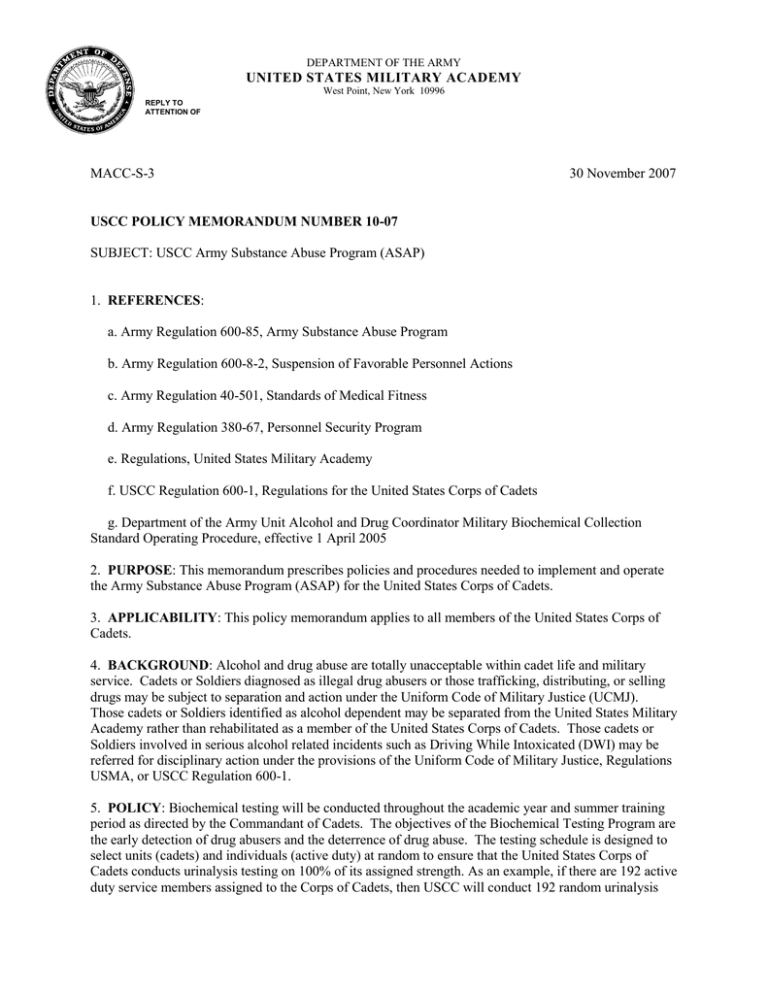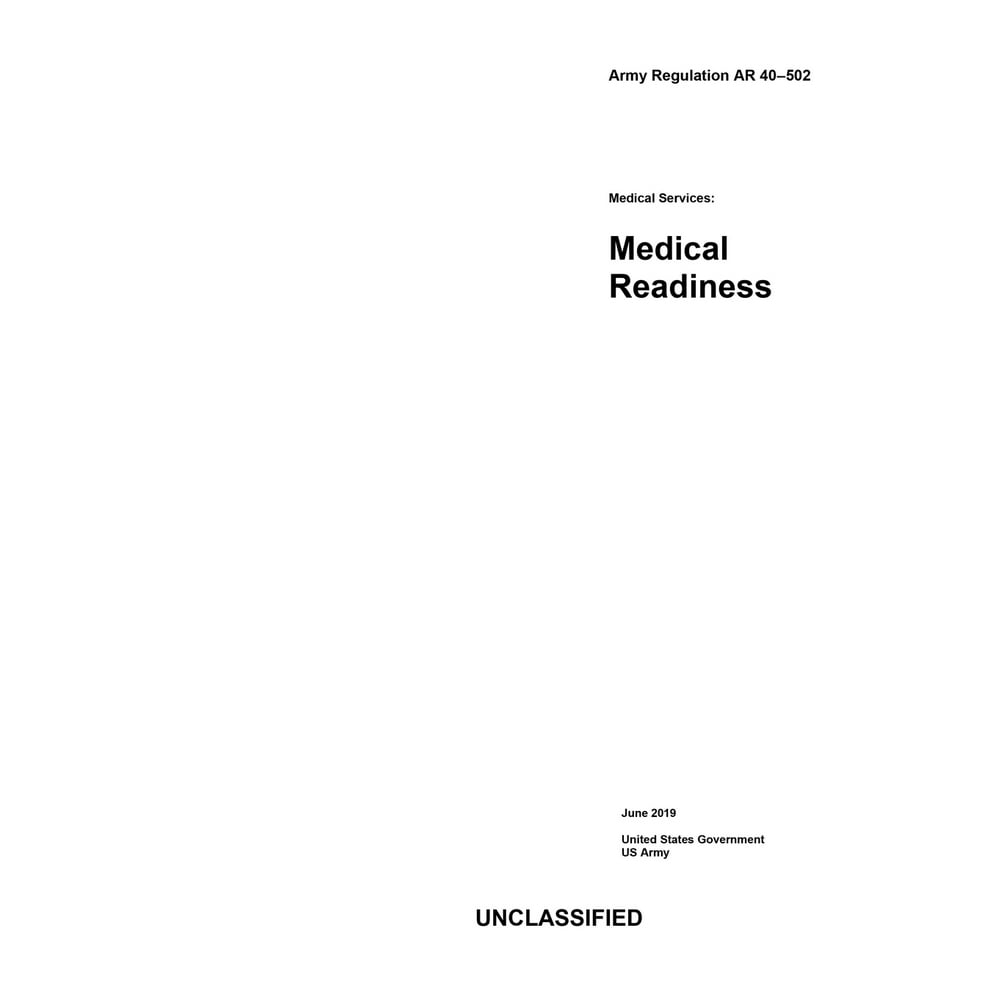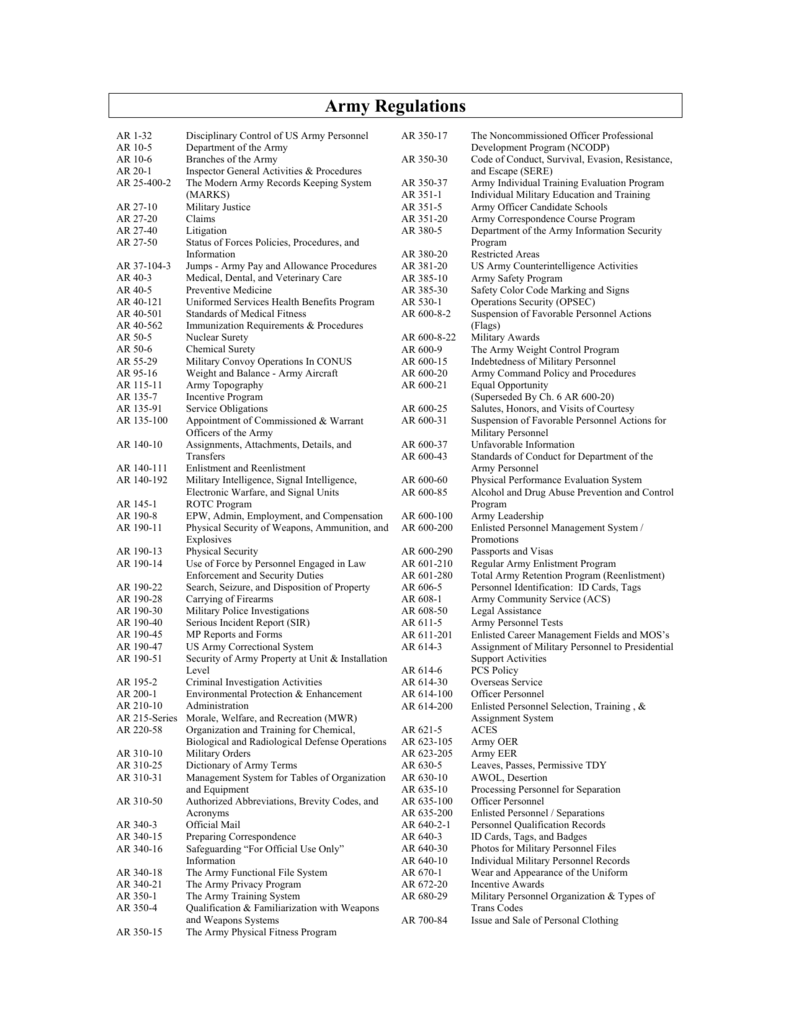Army Regulation 40-502 : What it is
Army Regulation 40-502: What It Is Introduction: Army Regulation 40-502, commonly known as AR 40-502, is a vital document that plays a crucial role in the U.S. Army's medical profile enrollment and management system. This regulation outlines the guidelines and procedures for assessing, documenting, and managing the medical fitness of Army personnel. AR 40-502 focuses on maintaining the health and readiness of soldiers, ensuring that only medically fit personnel are deployed to support military operations. In this article, we will delve into the details of AR 40-502, examining its significance, key components, and frequently asked questions. Subheading 1: Understanding AR 40-502 AR 40-502 provides a comprehensive guide on how the Army assesses and manages the medical profiles of its personnel. It covers the entire process, including medical examinations, profile management, and the various considerations involved in determining an individual's medical readiness. The regulation emphasizes the importance of accurate medical profiles, as they serve as a basis for determining the physical limitations and capabilities of service members. Understanding the key elements and requirements of AR 40-502 is crucial for both Army personnel and medical professionals responsible for evaluating soldiers' medical conditions. Subheading 2: Key Components of AR 40-502 a) Medical Profile Creation: AR 40-502 outlines the detailed procedures for creating medical profiles for Army personnel. It includes the necessary paperwork, examinations, and documentation required to accurately assess the physical condition and medical limitations of each individual. b) Profile Maintenance: The regulation also provides guidelines for maintaining and updating medical profiles. This involves periodic reassessments, reevaluations, and potential changes in the profile status based on the evolving medical conditions of the soldier. c) Deployment Considerations: AR 40-502 addresses deployment considerations, ensuring that only those soldiers who meet the established medical fitness standards are authorized for deployment. It covers both permanent change of station (PCS) and temporary duty (TDY) assignments, emphasizing the importance of a thorough assessment of each individual's medical readiness before deployment. Subheading 3: Frequently Asked Questions (FAQ) 1. How often should medical profiles be updated? - Medical profiles should be reassessed at least annually, or whenever there is a significant change in the soldier's medical condition that may affect their health or performance. 2. Can a soldier challenge a medical profile determination? - Yes, if a soldier disagrees with the assessment provided by the medical authority, they have the right to request a second medical opinion or go through the formal appeals process outlined in AR 40-502. 3. Are there specific medical conditions that automatically result in a certain profile? - No, the determination of a medical profile is based on a holistic evaluation of the soldier's medical condition. Each case is assessed individually, considering factors such as functional limitations and the impact of medical conditions on performance. Conclusion: AR 40-502 is a vital regulation that ensures the Army's medical readiness and the well-being of its soldiers. By implementing a comprehensive system for assessing and managing medical profiles, the U.S. Army maintains the highest standards of combat readiness while ensuring the health and safety of its personnel. Understanding the key components of AR 40-502 is essential for Army personnel, medical professionals, and all individuals involved in the process of assessing and maintaining the medical fitness of our armed forces. FAQs: Q1: How often should medical profiles be updated? Q2: Can a soldier challenge a medical profile determination? Q3: Are there specific medical conditions that automatically result in a certain profile? Disclaimer: The views and opinions expressed in this article are solely those of the author and do not reflect the official policy or position of any entity, including the U.S. Army or the Department of Defense. This article is for informational purposes only and should not be considered as legal or medical advice.  Image Source : www.rallypoint.com
Image Source : www.rallypoint.com  Image Source : armymilitary.net
Image Source : armymilitary.net  Image Source : defencelab.info
Image Source : defencelab.info  Image Source : www.walmart.com
Image Source : www.walmart.com  Image Source : www.reddit.com
Image Source : www.reddit.com  Image Source : armymilitary.net
Image Source : armymilitary.net  Image Source : archive.org
Image Source : archive.org  Image Source : www.corbinforum.com
Image Source : www.corbinforum.com
What Are The Regs On Quarters Slip? | RallyPoint
 Image Source : www.rallypoint.com
Image Source : www.rallypoint.com Army Profile Regulation 40 501 - Army Military
 Image Source : armymilitary.net
Image Source : armymilitary.net Army Profile Regulation 2022
 Image Source : defencelab.info
Image Source : defencelab.info Army Regulation AR 40-502 Medical Services : Medical Readiness June
 Image Source : www.walmart.com
Image Source : www.walmart.com readiness
New Photo Of The Pinks And Greens Uniform. : Army
 Image Source : www.reddit.com
Image Source : www.reddit.com army uniform maternity pinks greens update sma service year old considering reddit
Army Profile Regulation 40 501 - Army Military
 Image Source : armymilitary.net
Image Source : armymilitary.net Army Regulation No. 380-5 - Safeguarding Military Information : William
 Image Source : archive.org
Image Source : archive.org archive regulation army
References
references
What are the regs on quarters slip?. Archive regulation army. Army profile regulation 40 501. New photo of the pinks and greens uniform. : army. Army profile regulation 40 501